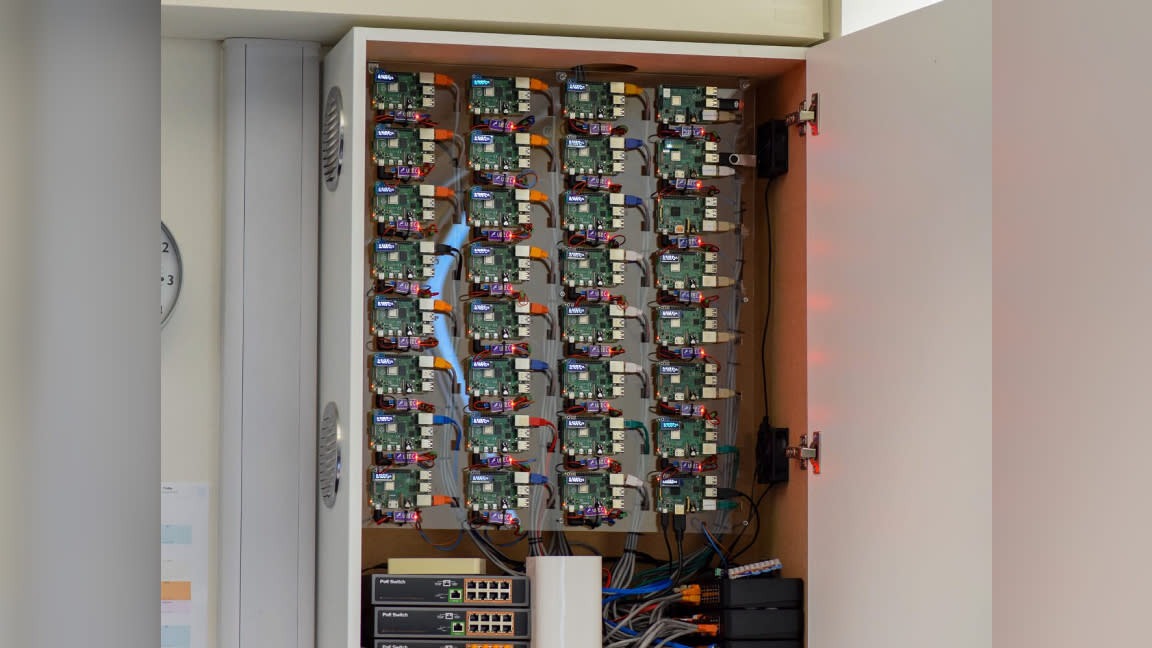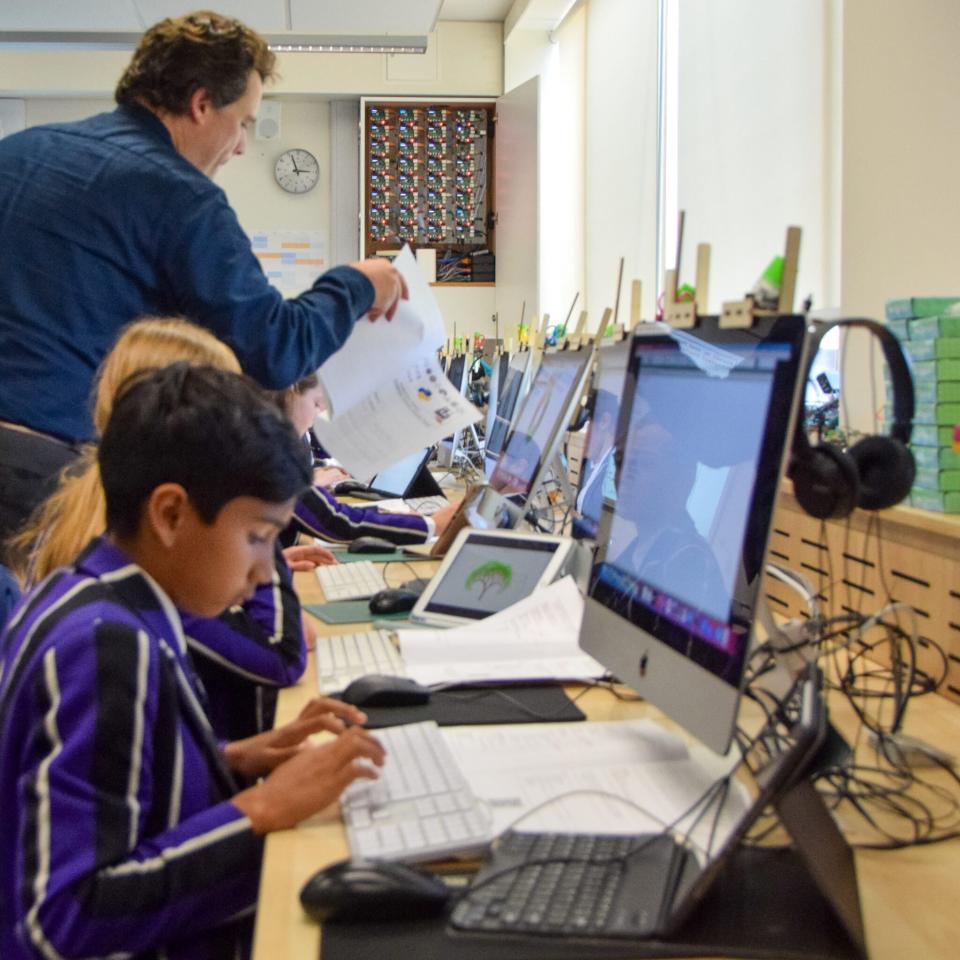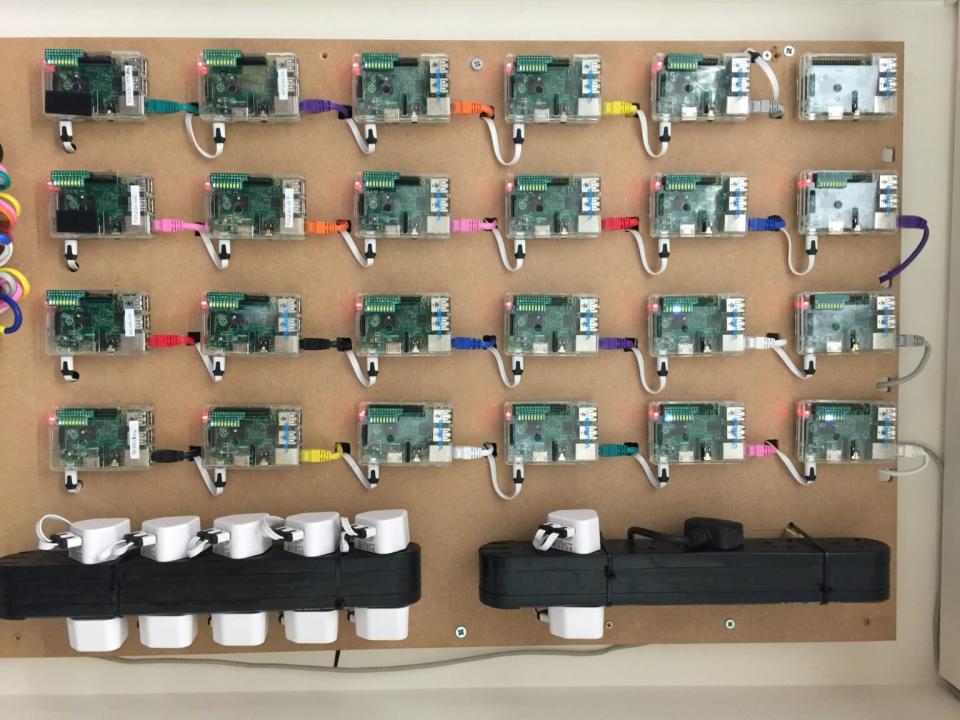Cluster of 32 Raspberry Pis Powers Coding Class

Every teacher has a special touch that makes their classroom unique and Mike Reed’s Digital Learning class at Kimbolton School is a shining example of his expertise. Reed not only uses our favorite SBC, the Raspberry Pi, to teach children programming fundamentals, he also has them wired together in an amazing cluster he can monitor and track while the students access them remotely.
Reed recently spoke with Raspberry Pi in a recent blog post and explained that the Raspberry Pis were original scattered about the room. This led to the development of a cluster that would minimize clutter by isolating all of the hardware to one location. The version we're showing here is Reed's third iteration.


The students in Reed’s class each sit at a desk with a computer. These are connected to the same network as the Raspberry Pi cluster. Each student is responsible for remoting into their respective Pi using its IP address. According to Reed, this lets him spend more time addressing the programming lesson rather than wasting time assisting with hardware.
Ten years after creating the first cluster, Reed has debuted the third official version. This new cluster features 32 boards total. Each unit is a Raspberry Pi 4 B featuring an OLED display panel which has been programmed to output its current IP address and whether or not anyone is connected to it using VNC.
Reed goes on to share some of what the class involves for his programming students. Almost every student begins with “Hello World” and works their way up to using functions, arguments, and more. Once the students are able to handle graphic interfaces, they move onto programming more complex games like the classic Pong.
If you want to get a closer look at this Raspberry Pi project, you can see a demo video of it in action over at YouTube and read more about Reed’s work with the Raspberry Pi over at the official blog.

